A medieval marvel: Tallin, Estonia
Tallinn is the capital and largest city of Estonia, situated on the shore of the Gulf of Finland, about 80 km (50 mi) south of Helsinki, east of Stockholm, and west of Saint Petersburg.
Founded in 1248, the earliest human settlements date back to 3000 years BC, making it one of the oldest capital cities of Northern Europe. Due to its important strategic location the city soon became a major trade hub, especially between the 14th to 16th century when it grew to be a key center of commerce within the Hanseatic League. Today, Tallinn’s Old Town is one of the best preserved and intact medieval cities in Europe and is listed as a UNESCO World Heritage Site.
 Panorama of All-linn (Lower Old Town) taken from Toompea (Upper Old Town), Tallinn, Estonia
Panorama of All-linn (Lower Old Town) taken from Toompea (Upper Old Town), Tallinn, Estonia
 The Tallinn Song Festival Grounds is where, in 1988, the Spring Revolution set Estonia on its road towards independence;
The Tallinn Song Festival Grounds is where, in 1988, the Spring Revolution set Estonia on its road towards independence;
the site now hosts the “Song and Dance Celebration” every 5 years with 24,000 singers and 200,000 spectators
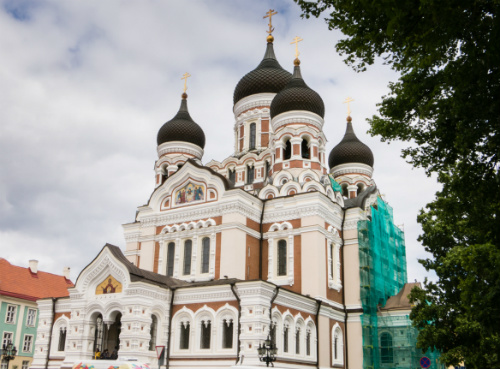 St. Aleksander Nevsky Cathedral, completed in 1900, sits atop Toompea Hill (upper Old Town);
St. Aleksander Nevsky Cathedral, completed in 1900, sits atop Toompea Hill (upper Old Town);
it was built to reflect Russian dominance over the territory at that time
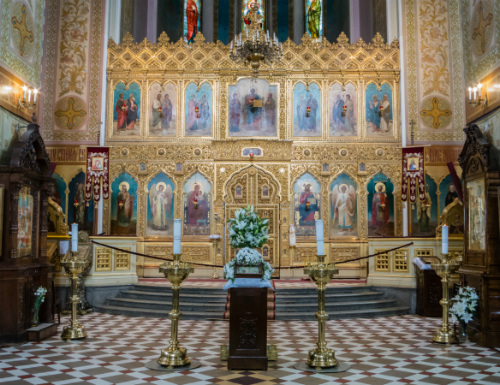 The highly decorated Russian Orthodox interior of St. Aleksander Nevsky Cathedral
The highly decorated Russian Orthodox interior of St. Aleksander Nevsky Cathedral
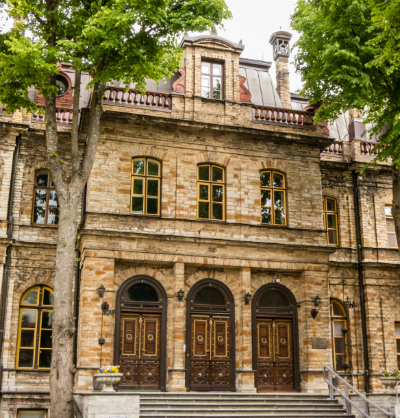 A rare example of a 19th century building with the limestone blocks exposed –
A rare example of a 19th century building with the limestone blocks exposed –
the later construction method was to then cover the facades with plaster painted in a variety of bright hues
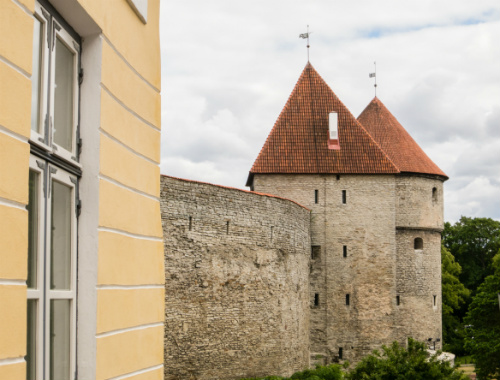 A portion of the old town wall in Toompea (upper Old Town); the walls, constructed in the 13th century,
A portion of the old town wall in Toompea (upper Old Town); the walls, constructed in the 13th century,
covered a circumference of 1.9 km (1.2 mi) and are one of Europe’s best preserved medieval fortifications
In Old Town (both the upper section, Toompea Hill, and the lower section, All-linn) cobblestone streets wind along the remnants of a powerful medieval city wall, past its gates and guard towers and spread out in between narrow row houses. Raekoja Plats (Town Hall Square) is surrounded by sunny, pastel-colored structures, leaving the center open for the market, as it has been since the 11th century. St. Katherine’s (Katarina’s) Passage has galleries set up in vaulted cellar rooms.
 Tallinna Raekoda (Town Hall), dates back to the early 15th century (the weathervane atop the spire was first placed there in 1530);
Tallinna Raekoda (Town Hall), dates back to the early 15th century (the weathervane atop the spire was first placed there in 1530);
it is now used for concerts and select political events
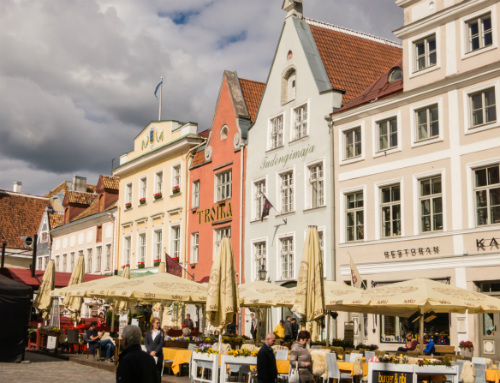 A long row of shops and cafes along one side of Raekoja Plats (Town Hall square)
A long row of shops and cafes along one side of Raekoja Plats (Town Hall square)
 An old shop on the corner of the Raekoja Plats (Town Hall square), dating back to the 15th century
An old shop on the corner of the Raekoja Plats (Town Hall square), dating back to the 15th century
 Home to St. Catherine’s Guild, St. Catherine’s passage is one of the most picturesque sites in All-linn (Lower Old Town);
Home to St. Catherine’s Guild, St. Catherine’s passage is one of the most picturesque sites in All-linn (Lower Old Town);
15th to 17th century rooms for artisans line the lane, adjacent to the Dominican Monastery
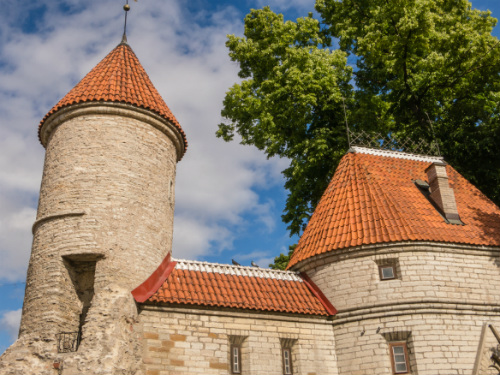 One of the two Viru Gates towers that were part of the larger and more complex defense system
One of the two Viru Gates towers that were part of the larger and more complex defense system
that once protected All-linn (Lower Old Town), built in the 14th century
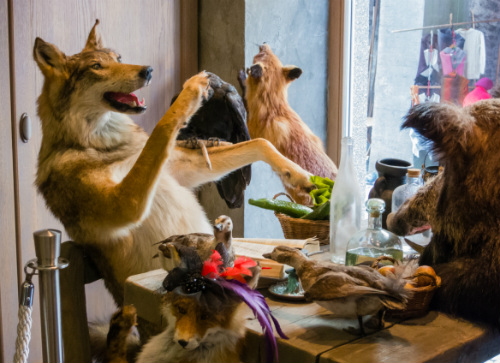 A fantastical dining scene tableau at the storefront window of the 2-year old, all local products restaurant, “Farm”,
A fantastical dining scene tableau at the storefront window of the 2-year old, all local products restaurant, “Farm”,
near the Viru Gates where, with friends, we had an incredible Estonian dinner
Ready to learn more?
Determine whether life aboard The World is the right fit for you. Talk to one of our Residential Advisors today to learn more about this unique lifestyle, details of upcoming Journeys and Expeditions, and ownership opportunities.



